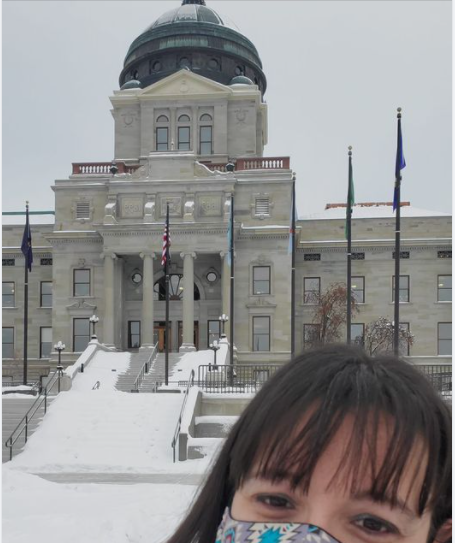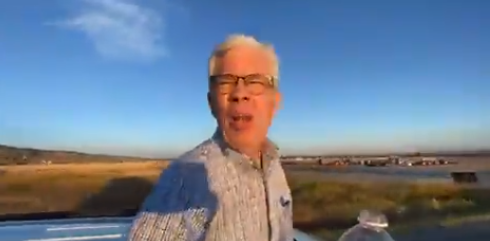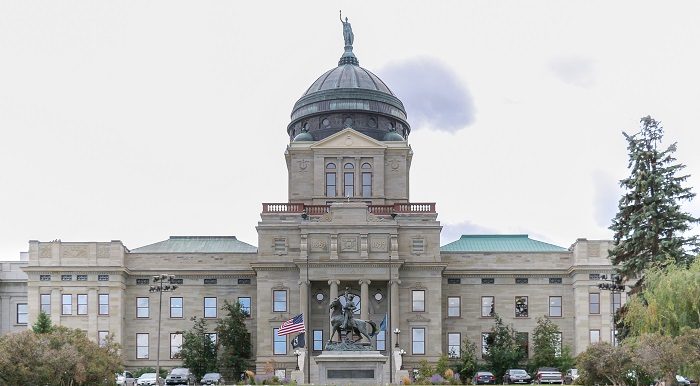Extreme winds in Northcentral Montana contributed to spreading major fires in the area resulting in the loss of homes and other structures and uprooting the lives families. Two of the hardest areas are Gibson Flats, south of Great Falls, and Denton, Montana which is located a little over halfway between Great Falls and Lewistown. Here…
Category: Montana
The War of Words at the Montana Supreme Court
Editors note: E-City Beat welcomes new contributor, Leslie D. Soule. See her brief bio at the end of her article. The eyes of the nation are now on the Montana Supreme Court, with the recent email scandal that has taken place. Thus, untangling this Gordian Knot of issues, is the key in understanding the situation…
Great Falls Dem Melissa Smith Agrees ICE And Filibuster Are ‘White Supremacy’
In our continuing series of articles concerning state public officials’ and political candidate social media pages, we’re highlighting Democrat Melissa Smith, who lost to GOP incumbent Fred Anderson in Cascade County’s HD 20 in 2020. Here, in someone else’s poke at Governor Gianforte, Smith equates a vague reference to a ‘gun’ as an example of…
Local Dem Bessette Sports ‘Hail Satan’ Shirt, Vows Return To Legislature In ’23
As we continue our series on the revealing social media posts of local and state candidates/politicians we return to Democrat Barabara Bessette, a former Great Falls Representative incumbent who lost to GOP newcomer Steven Galloway in Cascade County’s HD 24 in 2020. After we posted our piece earlier in the week about Bessette’s nasty, extremely…
Post Election Cooney Not As Nice Or ‘Moderate’ As Pre Election Cooney
Recently we have been getting emails from readers with screenshots from local and state public officials’ and political candidate social media pages. And there are some very, very interesting examples which we will be highlighting in the coming weeks. So let’s start with former Montana Lt. Governor and 2020 Democrat gubernatorial candidate Mike Cooney. Many…
Montana Minimum Wage Increase?
Editors note: Below is an email forwarded to E-City Beat from Great Falls State Representative Lola Galloway. Dear State Representative Galloway, As Montana continues to discuss the state’s minimum wage I wanted to call your attention to The Heartland Institute’s newest Research & Commentary examining the economic implications associated with Senate Bill 187. Heartland’s state government relations coordinator Samantha…
Cascade County National Heritage Area Designation Not Dead Yet
IMPORTANT! It has come to my attention that there is a misconception among Cascade County residents that since the county commissioners voted to oppose the National Heritage Area, it is a dead in the water. I’ve gotten quite a few messages and phone calls from folks who believe that but nothing could be further from…
Big Local Pushback To Big Sky Country National Heritage Area Effort
Editors note: the following is a press release from Montanans Opposing Big Sky Country National Heritage Area. News Release For Immediate Release: Contact: December 2, 2020 Rae GrulkowskiMontanans Opposing Big Sky Country National Heritage Arearae@3rivers.net406.788.3204 Montanans Says NO to BSCNHA! Great Falls, Cascade County, MT – On December 2, 2020, the thirteenth organization submitted their…
Montana Voters Give GOP Strong Majority In Statehouse
The red wave in Montana dealt a crushing blow to state Democrats. In addition to sweeping all of the statewide offices from Governor to State Auditor, Republicans won a strong majority in both chambers of the Montana legislature. In the House, Republicans picked up 9 seats, giving them a 67 to 33 majority there. The…
Montana Red Tsunami, Cascade County Red Wave
As of today, the U.S. presidential election is undecided with four states, North Carolina, Georgia, Nevada and Pennsylvania, still counting ballots and their corresponding electoral votes still up for grabs. One thing is certain though – the oft-predicted national blue wave sweeping Republicans from office didn’t happen. There wasn’t even a blue splash. In fact…











